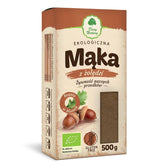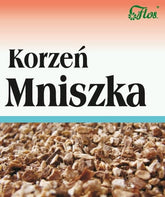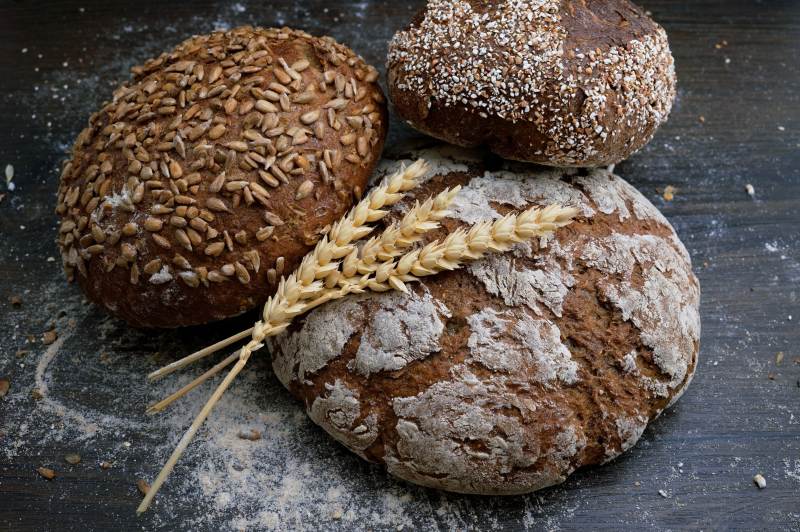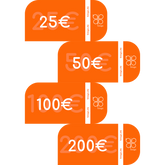Gluten-free diet - how and with what products containing gluten are replaced
Contents
Everyone has heard of the gluten-free diet. It's so popular that even people without medical indications are adopting it. For medical reasons, gluten must be completely eliminated from the diet of people with celiac disease, food intolerance, non-celiac gluten sensitivity, and wheat allergy. Let's find out what gluten is, where it hides, and how we can replace it in our daily diet.
What is gluten actually?
Gluten is a common protein in most grain products we know and has been consumed for thousands of years. We find it in wheat, rye, and barley, as well as in foods made from them. Its gluten content ensures that bread is elastic rather than dry and brittle. Gluten gives products stickiness and the appropriate consistency. We find it in products such as:
- Wheat flour , spelt flour and all products made from them such as bread, cakes, pizza,
- Groats: semolina, barley, semolina, couscous,
- Muesli ,
- noodles ,
- Sausages.
Gluten is added to various types of food during production, which is why we find it almost everywhere, for example in chocolate bars or ketchup. Therefore, people who are forced to avoid gluten must definitely try to avoid it in their diet. Fortunately, there are more and more options, and more and more products on store shelves are marked with a special symbol indicating that what we are buying is gluten-free. This symbol is a crossed grain. It is a licensed and international symbol. People who follow a gluten-free diet can be sure that they do not contain gluten when choosing products marked with this symbol.
How to replace gluten-containing products in your daily diet
While it may initially seem like a gluten-free diet might be difficult, given that gluten is ubiquitous in every food, it turns out there are a whole host of options. Here are some suggestions to get you started.
- Products that are naturally gluten-free include:
- Groats: millet, buckwheat, amaranth, bulgur, quinoa,
- rice ,
- Changelings,
- Corn.
Gluten-free pasta:
- Rice,
- Corn,
- roaring,
- made from lentils and chickpeas.
If we feel like something sweet, we can replace it with:
- dried fruits,
- homemade power balls and bars,
- Baked goods based on corn or rice flour .
Bread and flour products – in this case, we can either look for a store near our home that sells bread with the crossed-out ear symbol, or bake it ourselves at home. For baking bread and cakes, we can choose a ready-made flour mix. Gluten-free flours are divided into:
- Staple grains—rice, buckwheat, millet, and oats—are fine, and apart from buckwheat flour, they have a neutral flavor and are good for baking.
- Gluten – potatoes, corn and tapioca – are not suitable for baking bread due to their high starch content – baked goods can become sooty,
- from pods - chickpeas or soy, chickpeas - they are heavy, quite fatty and have a characteristic smell, so they must be mixed with other basic flours,
- Nut flours – hazelnut, coconut, almond, and chestnut – are heavy and fatty, they should be combined with basic flours; they are suitable for pancakes and sweet pastries.
Although elimination diets often force us to forgo our favorite foods, it turns out we can find many substitutes that aren't harmful to our health. Please note: If we are forced to eliminate gluten-containing products, we must read the labels carefully and be aware that gluten can also be hidden under the following names:
- semolina,
- hydrolyzed vegetable proteins
- modified starch, rye, potato, wheat,
- Seitan
- Malt.
A varied diet, even a gluten-free one, is essential for health. Therefore, we should alternate between gluten-free flours when baking. People on a gluten-free diet should always read labels carefully or choose products with the crossed-out grain symbol. It's also worth being aware of the phenomenon of gluten contamination. This means that products such as sheep, which are naturally gluten-free, may come into contact with gluten-containing products during production and packaging. Therefore, they may contain traces of gluten, and consumption by very sensitive individuals may have adverse effects.
THE PUBLISHER'S CHOICE
Dried plums 1 kg BIOGO
- €7,01
- €7,01
- Unit price
- / per
Dried White Mulberries 500 g ORGANIC
- €5,84
- €5,84
- Unit price
- / per
Almonds 1 kg BIOGO
- €11,69
- €11,69
- Unit price
- / per
Cranberries sweetened with apple juice organic 1 kg BIOGO
- €16,37
- €16,37
- Unit price
- / per
Dried dates 1 kg BIOGO
- €4,21
- €4,21
- Unit price
- / per
Unpeeled buckwheat groats 1 kg BIOGO
- €2,81
- €2,81
- Unit price
- / per
Walnuts 800 g BIOGO
- €8,65
- €8,65
- Unit price
- / per
Peeled sunflower seeds 1 kg BIOGO
- €3,04
- €3,04
- Unit price
- / per
PULLED ORGANIC SUNFLOWER SEEDS 1 KG BIOGO
- €4,44
- €4,44
- Unit price
- / per












































































































































